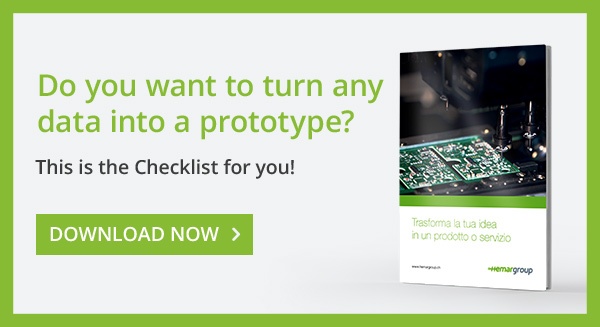
Imagine you’ve got a product idea that’s ready for launch, but you haven’t given any real thought to pre-production prototyping. You've taken on a team of great developers, your user experience guru has worked for some of the country's leading startups, and your designer is incredibly talented. You've taken months to perfect the app you always dreamed of creating.
Everything finally works, the bugs are sorted out, and you're ready for the off. The product has cost you a great deal of time, money, and personal sacrifice.
And now? No one downloads it, nobody wants it. Why? It's a winning idea, so where did you go wrong?
Unfortunately, this often happens to startups. Many ideas for products or services get shelved simply because they’re not yet ready: they’re not perfect, and there’s still something missing. Sadly, they never will be perfect.
That's why it's so important to road-test a prototype. This lets you obtain continuous feedback and creates a base of potential customers, many of whom will become ambassadors for your product, and paying users if you adopt a freemium business model.
So what is a prototype?
We like Eric Ries’s concept of a minimal viable product (MVP). This form of prototype is the quickest, simplest, and most cost-effective way of testing your idea before you place it on the market.
Once you’ve decided why your target customers need your idea, you should gain a detailed, holistic and empathic understanding of what makes them tick. Remember, you’re developing your prototype to meet their needs, not yours!
The next step is to create a minimal viable product, obtain feedback, and decide whether you're moving in the right direction. That way, your product will be highly desirable when it's launched, because it's already been tested.
Don't know where to start? Here's a "manual" to help you build your prototype
The most common question people ask is how to turn an idea into a design and then into a new product.
Is there a recipe for success?
The answer is yes: you need to follow a clearly defined step-by-step strategy, and have a lot of passion and motivation.
1. Design a simple mockup
Whether your product is physical or digital, start by creating a quick example of what it looks like, and show it to your audience. This technique works because it allows you to put together all the elements of your prototype in rudimentary form, perhaps as an initial sketch you’ve done yourself.
You’ll need to include all the key information:
- The basic concept of your idea
- What problem it will solve
- Who it’s aimed at: create an identikit picture of the ideal customer’s persona
- The other stakeholders in your business, and an income and business model
- The people who’ve really inspired you
Once you’ve created your prototype, organise a customer review: start showing it to your target market, for example entrepreneurs in the sectors you're interested in. This part of the process can be difficult, and you may need to make changes to the product, but it’s very important. If your product is a success after it’s launched, this will confirm that it meets a need and serves a useful purpose.
2. Look at competing businesses and products
Understanding who your direct competitors are is a key part of any startup strategy.
You’ll need to assess the following:
- Which companies you’re you competing with
- What products they offer
- Why yours is different, and why people will prefer it
If you can offer a real competitive advantage, this is where the prototyping stage starts. The prototype should be not a full-scale implementation, but simply a sketch you can show to potential customers. It should contain only the core of the end product. There’s no point including umpteen additional features if the core is weak and doesn't work. Often, all you’ll need is a small-scale cardboard model to show what your product will look like.
3. Create a landing page
Once you have an idea of what you want to build, set up a landing page where people can register to obtain more information. Your website should include a clear, concise description of what you’ll be offering. Point traffic towards it to find out whether people are sufficiently interested in your product to register and find out more.
As a bonus, when you're ready for launch, you’ll have a readymade mailing list of potential customers.
4. Offer a free or low-cost beta version if you’re using a freemium model
Show your idea to potential users by offering them a low-budget, high-value experience before moving on to something bigger.
The best way to validate and build a minimal viable product is to test it continuously. That way, you can put right anything that doesn't work, improve what does, and take out bits that are obsolete or don't offer significant added value. This is the right approach to follow if you want your product to be successful.
There are plenty of online communities where startups, testers and enthusiasts can join forces and try out products before they’re finally launched on the market.
5. Does your prototype work? Try hacking it
Getting a hacker to check your prototype can be a good investment. It's a low-risk opportunity to access and modify the hardware and software operating system prototypes.
Take part in events. Dozens of people working together in one room can provide creative, imaginative solutions to problems.
Hackathons exist in all shapes and sizes. Find one that suits your niche, and be prepared to pull an all-nighter!
Building and validating a prototype is the key to ensuring that your tech product is what the customer wants. Work in small, simple, and cost-effective steps, and obtain regular user feedback before and during the process. That way, you can save thousands of dollars and lots of headaches, and launch a product that people really want.
And they’ll enjoy taking part!
.png)
